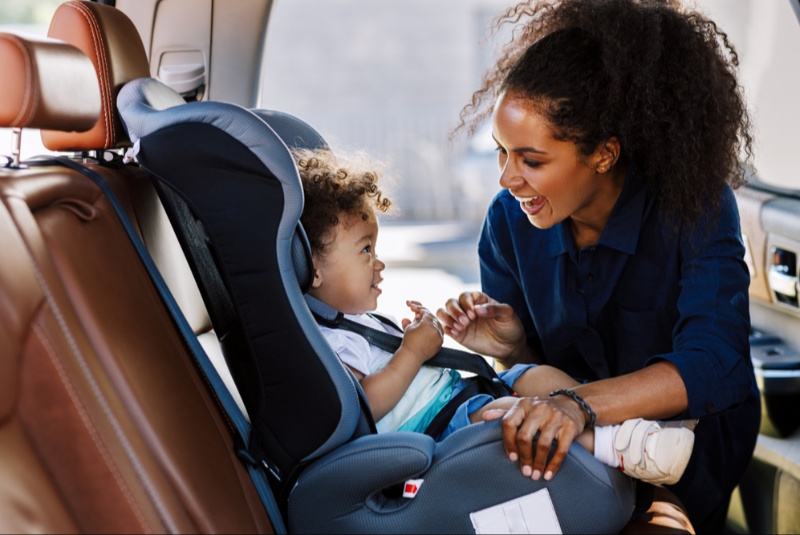Selecting the right car seat is one of the most important decisions you will make as a parent. It's crucial not only for the comfort of your child but also for their safety. This detailed guide will help you navigate through the process of choosing a car seat that fits your child’s needs and ensures they are secure on every journey.
Understand the Types of Car Seats
Understanding the various types of car seats is crucial for making an informed choice. Here’s a brief overview:
- Infant Car Seats: These are designed for newborns and small babies, typically up to 22-35 pounds. They are rear-facing, which is the safest position for young children, providing support for the head, neck, and spine. Many infant seats come as part of a travel system with strollers and are equipped with a base that stays in the car for easy click-in, click-out movement.
- Convertible Car Seats: These seats can be used from birth until a child reaches 65-70 pounds, converting from rear-facing to forward-facing. They offer a cost-effective solution since they adapt to your growing child’s needs.
- Booster Seats: Booster seats are for older children who have outgrown their forward-facing seats. They use the car's seat belt but position the child so that the belt fits properly over the stronger parts of the child's body.
Check for Size and Weight Limits
Selecting a car seat appropriate for your child’s current size and anticipated growth is essential. Each car seat has specific height and weight limits which are critical for safety. Choosing a seat your child will grow into might seem practical, but it’s vital that the car seat fits them at each stage of growth for optimal protection. Regular monitoring ensures the seat continues to meet your child’s size as they grow.
Consider the Car Seat's Fit in Your Vehicle
Not all car seats fit well in every type of vehicle. Before making a purchase, check how the car seat fits in your car. This includes ensuring that there is enough room for a rear-facing seat, that the seat can be properly and securely installed, and that it does not obstruct vehicle operations. Many baby supply stores will allow you to test the seat in your vehicle before buying, which can help prevent future issues with installation.
Look for Ease of Installation
Proper installation is crucial for a car seat’s effectiveness. Features that aid in installation include the LATCH system, which allows you to attach the seat directly to the vehicle rather than using seat belts. Models with clear, intuitive instructions, and color-coded paths can also simplify the installation process. It’s advisable to have your installation checked by a certified child passenger safety technician.
Check for Comfort and Quality
Ensuring your child's comfort can contribute to more peaceful and pleasant car rides. Look for car seats with ample padding, adjustable headrests, and multiple reclining positions to accommodate both comfort and growth. High-quality materials that are durable and easy to clean without compromising the structural integrity of the seat are essential for both comfort and longevity.

Evaluate Safety Features
Advanced safety features can provide additional peace of mind. Features like advanced side-impact protection systems, extra head support, and energy-absorbing foam layers can significantly enhance safety. A 5-point harness system—two shoulder straps, two waist straps, and one strap between the legs—is the safest harness configuration. These features collectively help to reduce the risk of injury in the event of a crash.
Decide on New vs. Used
While a used car seat might seem economical, safety concerns make new seats a more advisable option. A used seat might have been in an accident or could be missing crucial parts or instructions. Additionally, car seats have expiration dates, typically six years after manufacture, due to the natural degradation of materials over time.
Consider Ease of Cleaning
Children inevitably make messes, so choosing a car seat that is easy to clean is important. Features such as detachable, machine-washable covers can make cleaning less of a chore. Materials that resist stains and are easy to wipe down can also simplify maintenance and keep the car seat looking new longer.
Research Product Recalls and Consumer Reviews
Staying informed about the safety record of a car seat is crucial. Check for any recalls or consumer alerts that may impact the safety of the seat. Additionally, reading consumer reviews can provide real-world insights into how the car seat performs in everyday use, covering aspects such as ease of use, durability, and child comfort.
Plan for the Future
Think about how the car seat will meet your needs over time. Convertible car seats, although initially more expensive than infant-only seats, can offer better long-term value as they adjust to your child's growing size and weight. Planning ahead can help you maximize your investment and ensure continued safety for your child.
Selecting the ideal car seat for your child is an essential task that combines understanding safety standards, acknowledging your child's specific needs, and integrating these into your family's lifestyle. By carefully evaluating the types of car seats available, considering their fit in your vehicle, ensuring they meet the highest safety standards, and addressing ease of installation and maintenance, you can make an informed choice that guarantees your child's safety in every journey. Always prioritize a seat that grows with your child, offers maximum protection, and fits properly in your car. Remember, the best car seat is one that you use correctly every time, providing peace of mind while protecting your most precious cargo.


